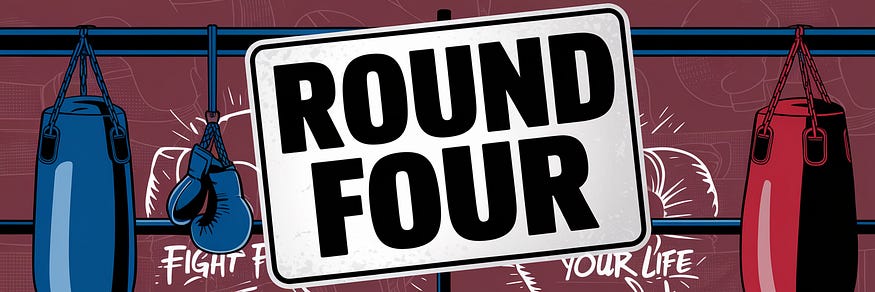Digital Déjà Vu: What Netflix’s Streaming Knockout Can Learn from Healthcare.gov’s Crash
The Unexpected Parallels Between a Boxing Match and a Healthcare Website
When Netflix’s servers crashed during the Tyson-Paul fight, 10 million fans learned what healthcare seekers knew a decade ago: the internet’s biggest platforms still can’t handle their biggest moments.
Back in 2013, the launch of Healthcare.gov — America’s flagship health insurance marketplace — was nothing short of a fiasco. Fast forward to 2024, and Netflix stumbles spectacularly during its first live boxing event featuring none other than Mike Tyson and Jake Paul. Two entirely different arenas, yet the underlying issues are strikingly similar.
So, what happens when you mix a heavyweight boxing legend, a YouTube sensation, and a streaming giant unprepared for the spotlight? You get a digital knockout — just not the kind anyone wanted.
Round One: The Hype Train Derails
Both Healthcare.gov and Netflix’s live event were victims of their own hype. Anticipation soared, but the platforms couldn’t keep up with the crowd they attracted.
Healthcare.gov’s Misstep:
Underestimated Demand: Officials expected a moderate influx but were swamped by millions trying to log on simultaneously.
Technical Shortcomings: The site crashed repeatedly, forms wouldn’t load, and users were stuck in endless loops.
Netflix’s Blunder:
Server Overload: The Tyson vs. Paul fight drew an unprecedented number of viewers, causing streams to buffer incessantly.
Production Gaffes: Audio cutouts, misdirected cameras, and even unintended glimpses of backstage areas left viewers puzzled and annoyed.
Lesson Learned: Anticipate success as much as failure. If you’re launching something big, plan for an even bigger audience.
Round Two: Communication Breakdown
When things go south, clear communication can be the difference between a blip and a catastrophe.
Healthcare.gov’s Silence:
Lack of Transparency: Users were left in the dark about the issues plaguing the site.
Mixed Messages: Official statements often contradicted user experiences, eroding trust.
Netflix’s Fumble:
Real-Time Confusion: Commentators seemed as lost as the audience, with miscommunications evident on-air.
No Immediate Acknowledgment: As complaints flooded social media, Netflix remained mum, exacerbating user frustration.
Lesson Learned: Own up to problems quickly. Transparency can turn a negative experience into a building block for trust.
Round Three: The Tech Tango
Behind the scenes, both platforms suffered from a tangled web of technical woes.
Healthcare.gov’s Tangle:
Fragmented Development: Multiple contractors worked in silos, leading to a disjointed final product.
Inadequate Testing: Last-minute changes weren’t thoroughly vetted, causing systemic failures upon launch.
Netflix’s Snag:
New Territory: Venturing into live events was a leap from their on-demand forte, and the lack of experience showed.
Insufficient Stress Tests: The platform wasn’t adequately tested under conditions simulating millions tuning in at once.
Lesson Learned: Don’t underestimate the importance of thorough, end-to-end testing, especially when stepping into new arenas.
Round Four: The Human Element
Technology doesn’t fail on its own; it’s the people behind it that make or break the experience.
Healthcare.gov’s Oversight:
Project Management Chaos: Without a clear leader, the project suffered from conflicting directives and priorities.
Ignoring Expertise: Warnings from tech experts were overlooked in the rush to meet political deadlines.
Netflix’s Oversight:
Understaffed Support: The sheer volume of issues overwhelmed customer service, leaving users without assistance.
Live Production Inexperience: The team lacked the seasoned professionals needed to navigate the unpredictability of live events.
Lesson Learned: Invest in people as much as in technology. Skilled teams can navigate and mitigate crises in real-time.
Final Round: Strategies for a Comeback
It’s not about how hard you fall but how swiftly you rise and adapt.
1. Scalable Infrastructure is Non-Negotiable
Cloud Solutions: Leverage cloud services that can auto-scale to handle unexpected traffic surges.
Content Delivery Networks (CDNs): Distribute content across global servers to reduce load times and prevent bottlenecks.
2. Embrace Chaos (Engineering)
Simulate Failures: Intentionally disrupt systems to identify weaknesses before they become public problems.
Continuous Testing: Make stress tests a regular part of the development cycle, not an afterthought.
3. Foster Open Communication
Real-Time Updates: Keep users informed about issues and expected resolution times.
Internal Alignment: Ensure all team members, from executives to customer service reps, are on the same page.
4. Prioritize User Experience Above All
User-Centric Design: Simplify interfaces and navigation to reduce friction.
Feedback Loops: Implement channels for users to report issues easily and for teams to act on them promptly.
5. Learn from the Past, Don’t Repeat It
Post-Mortems Matter: Conduct thorough analyses after every major event to identify areas for improvement.
Cross-Industry Insights: Don’t limit learning to your sector. Netflix can glean valuable lessons from Healthcare.gov’s experience, and vice versa.
The Road Ahead: Turning Mishaps into Milestones
Both Healthcare.gov and Netflix had the potential to revolutionize their respective fields. Initial failures don’t define the journey but illuminate the path forward.
Healthcare.gov Today: After extensive overhauls, it’s a functioning platform that millions rely on for healthcare access.
Netflix’s Opportunity: With the right adjustments, Netflix can dominate live streaming just as it has with on-demand content.
For organizations embarking on ambitious digital projects, remember that technology is only as strong as the strategy behind it. Plan meticulously, test rigorously, communicate transparently, and never stop learning.
The Ripple Effect: When Giants Stumble
What Healthcare.gov and Netflix’s boxing blunder teach us isn’t just about server capacity or load testing — it’s about the growing pains of digital ambition. As our virtual audiences swell from millions to tens of millions, even tech giants find themselves backed against the ropes. Yet these public stumbles, embarrassing as they are, often catalyze the innovations that power our next digital leap forward. Healthcare.gov eventually became a stable platform serving millions, and Netflix’s next streaming spectacle will likely be built on the hard lessons of the Tyson-Paul fiasco. In the digital arena, it seems, sometimes you have to take a hit to learn how to dodge the next punch.










